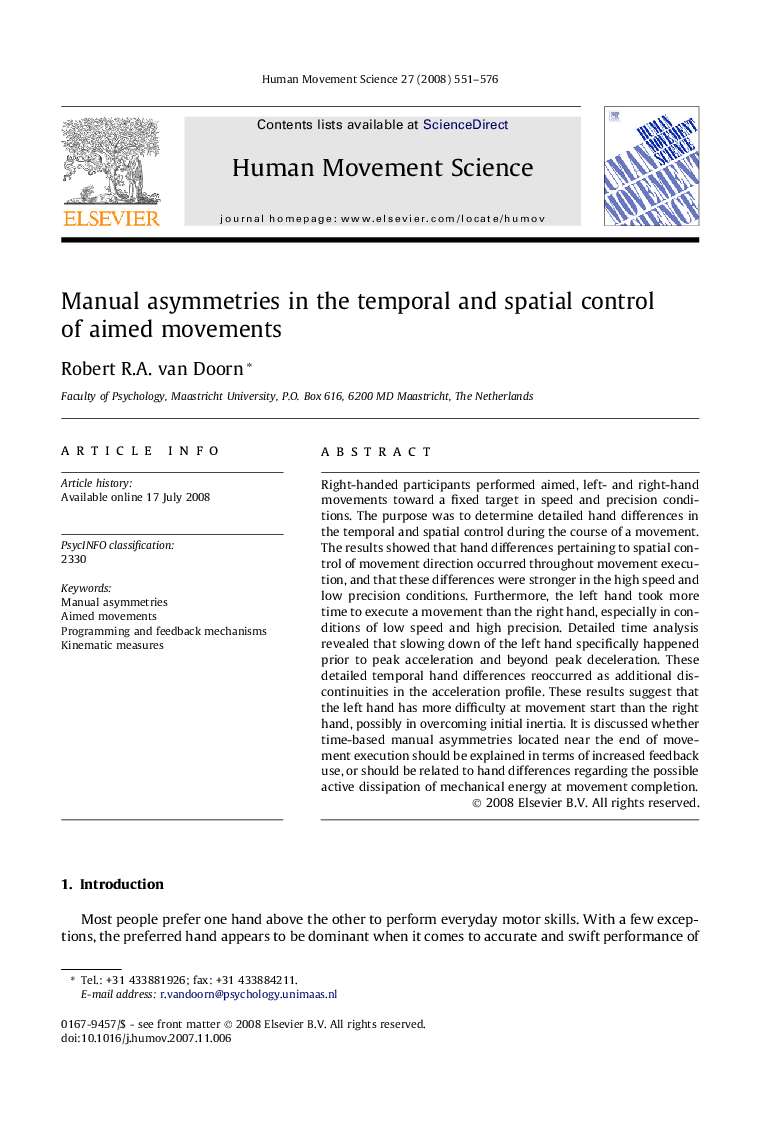| Article ID | Journal | Published Year | Pages | File Type |
|---|---|---|---|---|
| 928908 | Human Movement Science | 2008 | 26 Pages |
Right-handed participants performed aimed, left- and right-hand movements toward a fixed target in speed and precision conditions. The purpose was to determine detailed hand differences in the temporal and spatial control during the course of a movement. The results showed that hand differences pertaining to spatial control of movement direction occurred throughout movement execution, and that these differences were stronger in the high speed and low precision conditions. Furthermore, the left hand took more time to execute a movement than the right hand, especially in conditions of low speed and high precision. Detailed time analysis revealed that slowing down of the left hand specifically happened prior to peak acceleration and beyond peak deceleration. These detailed temporal hand differences reoccurred as additional discontinuities in the acceleration profile. These results suggest that the left hand has more difficulty at movement start than the right hand, possibly in overcoming initial inertia. It is discussed whether time-based manual asymmetries located near the end of movement execution should be explained in terms of increased feedback use, or should be related to hand differences regarding the possible active dissipation of mechanical energy at movement completion.
